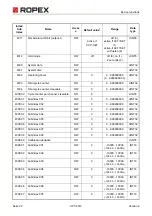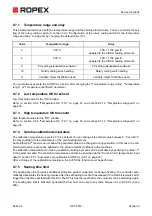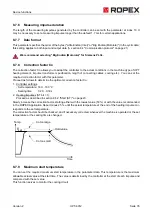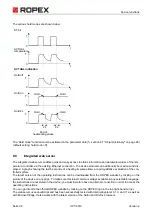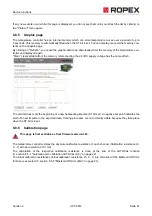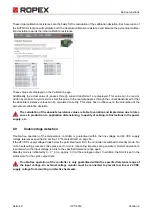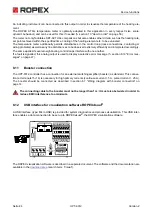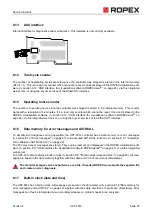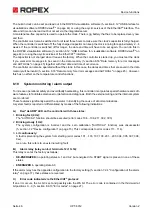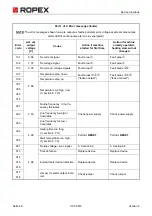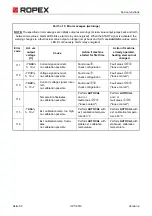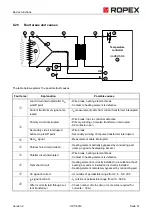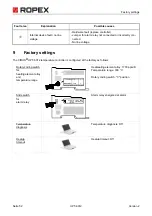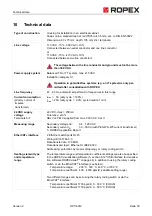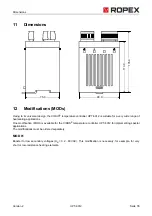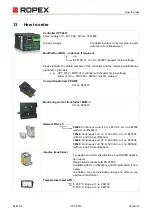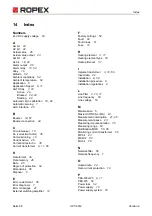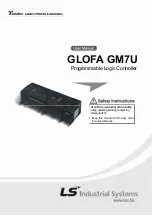
Device functions
Seite 46
UPT-6012
Version 2
The built-in clock can be set and read out in the ROPEX visualization software (
section 8.12 "USB interface for
visualization software ROPEXvisual
" on page 44) or using the acyclic services of the EtherCAT
®
interface. The
date and time can be read out but not set via the integrated server.
A maintenance-free capacitor is used to operate the clock. There is no battery that has to be replaced every now
and then.
The controller must remain switched on for at least three hours to make sure the clock’s capacitor is fully charged.
When the controller is switched off, the fully charged capacitor can keep the clock running for approximately 2…4
weeks. If the controller is switched off for longer, the date and time will have to be set again. You can do this in
the ROPEX visualization software (
section 8.12 "USB interface for visualization software ROPEXvisual
page 44) or using the acyclic services of the EtherCAT
®
interface.
The capacitor is not charged when it leaves the factory. When the controller is started up, you must set the clock
if you want error messages to be saved in the data memory (
section 8.16 "Data memory for error messages
and AUTOCAL" on page 45) together with their date and time of occurrence.
The controller can also be operated without the clock. In this case, the dates and times that are saved in the data
memory will be invalid (
section 8.16 "Data memory for error messages and AUTOCAL" on page 45) . However,
this has no effect on the temperature control functions.
8.18
System monitoring / alarm output
To increase operational safety and avoid faulty heatsealing, this controller incorporates special hardware and soft-
ware features to facilitate selective error detection and diagnosis. Both the external wiring and the internal system
are monitored.
These features significantly assist the operator in identifying the cause of abnormal situations.
A system fault is reported or differentiated by means of the following indications.
A.)
Red "ALARM" LED on the controller with three states:
1.
Blinking fast (4 Hz):
The "AUTOCAL" function should be executed (error codes 104…106, 211, 302, 303).
2.
Blinking slowly (1Hz):
The system configuration is incorrect and the zero calibration ("AUTOCAL" function) was unsuccessful
(
section 7.2 "Device configuration" on page 15). This corresponds to error codes 111…114).
3.
Lit continuously:
A fault is preventing the system from starting (error codes 101…103, 107, 108, 201…203, 304, 305, 307, 308,
9xx).
As a rule, this refers to an external wiring fault.
B.)
Alarm relay (relay contact terminals 12+13+14):
This relay is set at the factory as follows:
•
DE-ENERGIZED
in operating states A.1 and A.2 but energized if a START signal is present in one of these
states.
•
ENERGIZED
in operating state A.3.
If the alarm relay has the opposite configuration to the factory setting (
section 7.2.4 "Configuration of the alarm
relay" on page 17), these states are reversed.
C.)
Error code indicated via the EtherCAT
®
protocol:
If an error occurs, the AL bit is set and possibly also the WA bit. The error code is contained in the third word at
bit positions 0…9 (

